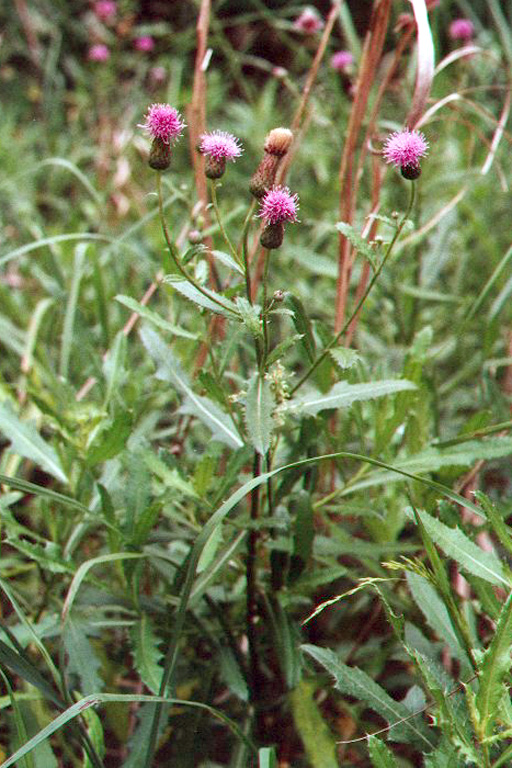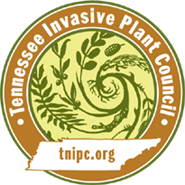Cirsium arvense (L.) Scop.
Cirsium arvense (L.) Scop.Canada Thistle
| Category |
|---|
| Forb/Herb |

Description
Height
Canada Thistle grows to 4 feet (1.2 m).Stem
The plant stem is rigid and hairy.Leaves
Leaves are lance-shaped, irregularly lobed 2 to 6 inches (5 to 15 cm) in length with prickly margins.Flowers
The flowers are purple to white in color and up to 0.5 inch (1.8 cm) in diameter. Flowering occurs in late June to August.Fruit
Small fruit, called achenes, are 1 to 1.5 inches (2.5-3.8 cm) long. They have a feathery pappus which enables them to be dispersed by the wind.Images
Photo:Dan Tenaglia, Missouriplants.com, Bugwood.orgMore images of Cirsium arvense
Life History
Canada Thistle is a perennial herbaceous plant that grows to 4 feet (1.2 m) tall. Spiny, tall, erect thistle is a member of Asteraceae. Unlike other thistles the male and female flowers appear on separate plants in the Canada thistle. (Male and female parts may appear together, but only one sex is fertile.) This dioecious, weedy perennial occurs in patches, commonly in disturbed areas. Most seeds germinate within one year. Some seeds immediately produce rosettes before winter and emerge to flower the next spring. Seeds remain viable in soil up to 20 years in some cases.Weed control legislation for Canada thistle was passed as early as 1795 in Vermont and 1831 in New York. Canada thistle is a problem even in Europe where natural enemies abound. Once established it spreads rapidly and is hard to remove.
Canada thistle is distinguished from other thistles (Cirsium spp.) by its deep-running perennial rootstocks, more slender stems, and small compact heads.
Habitat
Canada Thistle invades open areas such as prairies, savannas, fields, pastures, wet meadows and open forests. It can form dense stands that shade out and displace native vegetation. The plant does not do well in tight and healthy ecosystems.Origin and Distribution
It is native to Europe and Asia and was first introduced by accident in the 1600s to North America. It is an invader of open areas such as prairies, savannas, fields, pastures, wet meadows and open forests throughout parts of North America. Introduction to new areas occurs mostly by windborne seed or sometimes by run-off in ditches. Seeds can be blown a half mile in the wind. It spreads rapidly by rhizomes or root segments.Other States Where Invasive: AK, AL, AZ, CA, CO, CT, DE, IA, ID, IL, IN, KS, KY, MD, MI, MN, MO, MT, NC, ND, NE, NM, NV, OH, OK, OR, PA, SD, TN, WA, WI, WY.
Federal or State Listed as Noxious Weed, Prohibited, Invasive or Banned: AK, AZ, AR, CA, CO, CT, DE, HI, ID, IL, IN, IA, KA, KY, MD, MI, MN, MO, MT, NE, NV, NM, NC, ND, OH, OK, OR, PA, SD, UT, WA, WI, WY.
Sources
"Cirsium arvense." Species Abstracts of Highly Disruptive Exotic Plants at Effigy Mounds National Monument. Northern Prairie Wildlife Research Center: http://www.npwrc.usgs.gov/resource/othrdata/explant/cirsarve.htmErich Haber. "Canada Thistle Fact Sheet." Invasive Exotic Plants of Canada Fact Sheet No. 8: http://infoweb.magi.com/~ehaber/facthstl.html
Max Hutchinson. "Canada Thistle." Vegetation Management Guideline. Vol. 1, No. 7. Approved 02/06/90. Illinois Nature Preserves Commission. http://www.inhs.uiuc.edu/edu/VMG/cthistle.html
